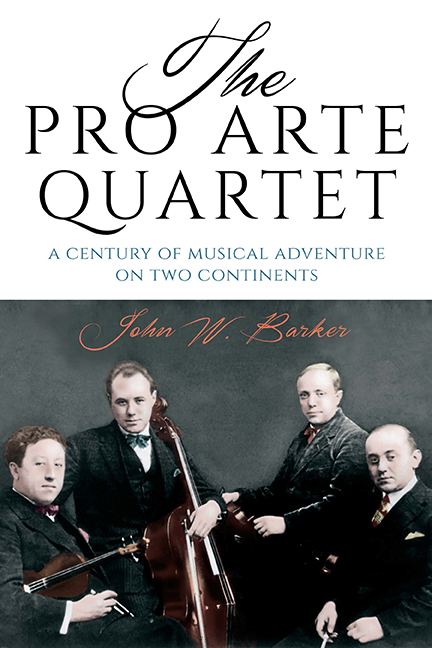Book contents
- Frontmatter
- Dedication
- Contents
- Preface
- Lists of Quartet Membership
- Introduction: Quartet Contexts
- 1 The Onnou Years, I (1912–31)
- 2 The Onnou Years, II (1932–40)
- 3 The Brosa Years (1940–44)
- 4 The Kolisch Years (1944–67)
- 5 The Paulu Years, I (1967–79)
- 6 The Paulu Years, II (1979–95)
- 7 The Perry Years (1995–Present)
- Conclusion: Retrospect and Prospects
- Appendixes
- Selected Bibliography
- Index A Composers
- Index B General
1 - The Onnou Years, I (1912–31)
Published online by Cambridge University Press: 10 June 2021
- Frontmatter
- Dedication
- Contents
- Preface
- Lists of Quartet Membership
- Introduction: Quartet Contexts
- 1 The Onnou Years, I (1912–31)
- 2 The Onnou Years, II (1932–40)
- 3 The Brosa Years (1940–44)
- 4 The Kolisch Years (1944–67)
- 5 The Paulu Years, I (1967–79)
- 6 The Paulu Years, II (1979–95)
- 7 The Perry Years (1995–Present)
- Conclusion: Retrospect and Prospects
- Appendixes
- Selected Bibliography
- Index A Composers
- Index B General
Summary
Formation, Definition, and Patronage
The Brussels Conservatory of Music was founded in 1832 as an academy of the state, contemporaneously with the creation of the independent Kingdom of Belgium as that state. Among its earliest directors were the Belgian musicologists François-Joseph Fétis (1784–1871) and François-Auguste Gevaert (1828–1908), whose successive regimes covered the first seventy-six years of the school's existence, long dominating the musical life of Brussels.
A violin department was established under Lambert Massart. His successor (1843–52) was the eminent violinist and composer Charles-Auguste de Bériot (1802–70), who established what came to be called the Franco-Belgian school of violin playing, based on the traditions and style of Paganini. This school of the violin emerged as the only rival on the international scene to the so-called Russian School of St. Petersburg. The influence of each “school” was great and widespread.
Massart's pupil Henri Vieuxtemps led that faculty department in his turn, and was teacher of Eugène Ysaÿe, who followed the Polish virtuoso Hendryk Wieniawski. Succeeding Ysaÿe as director was César Thomson. In subsequent generations, the violin faculty included André Gertler and Arthur Grumiaux. (Since 1967, the Conservatory has been divided into two institutions, one for instruction in French, the other in Flemish.)
With such a faculty, the Conservatory nurtured several generations of gifted young musicians, who were drawn to it as providing the foundation of their careers. Among them were those who became founders of the Quatuor Pro Arte.
The eldest of them was Germain Prévost, who was born in 1891. His father was a tanner, but the family was actively musical and encouraging. Arthur, the first of the three sons, trained as a clarinetist and became an important figure in Belgian musical life. Germain was the second son, and in his turn became an admired (and money-earning) clarinetist. He studied violin, and at age thirteen he began to teach himself the viola, which was to become his true love. With such diverse foundations, Germain secured entry to the Brussels Conservatory in 1909, at age eighteen, as a clarinet student. Through great diligence he worked up his skills on the viola and advanced rapidly
- Type
- Chapter
- Information
- The Pro Arte QuartetA Century of Musical Adventure on Two Continents, pp. 7 - 32Publisher: Boydell & BrewerPrint publication year: 2017

